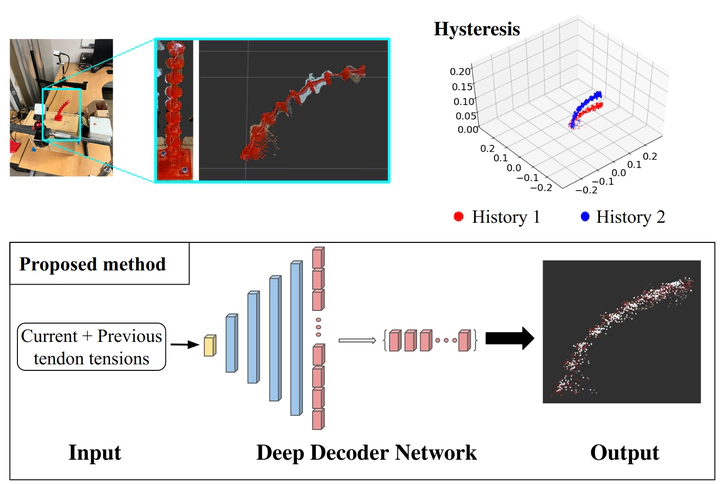Accounting for Hysteresis in the Forward Kinematics of Nonlinearly-Routed Tendon-Driven Continuum Robots via a Learned Deep Decoder Network

Abstract
Tendon-driven continuum robots have been gain- ing popularity in medical applications due to their ability to curve around complex anatomical structures, potentially reduc- ing the invasiveness of surgery. However, accurate modeling is required to plan and control the movements of these flexible robots. Physics-based models have limitations due to unmodeled effects, leading to mismatches between model prediction and actual robot shape. Recently proposed learning-based methods have been shown to overcome some of these limitations but do not account for hysteresis, a significant source of error for these robots. To overcome these challenges, we propose a novel deep decoder neural network that predicts the complete shape of tendon-driven robots using point clouds as the shape representation, conditioned on prior configurations to account for hysteresis. We evaluate our method on a physical tendon- driven robot and show that our network model accurately predicts the robot’s shape, significantly outperforming a state- of-the-art physics-based model and a learning-based model that does not account for hysteresis.